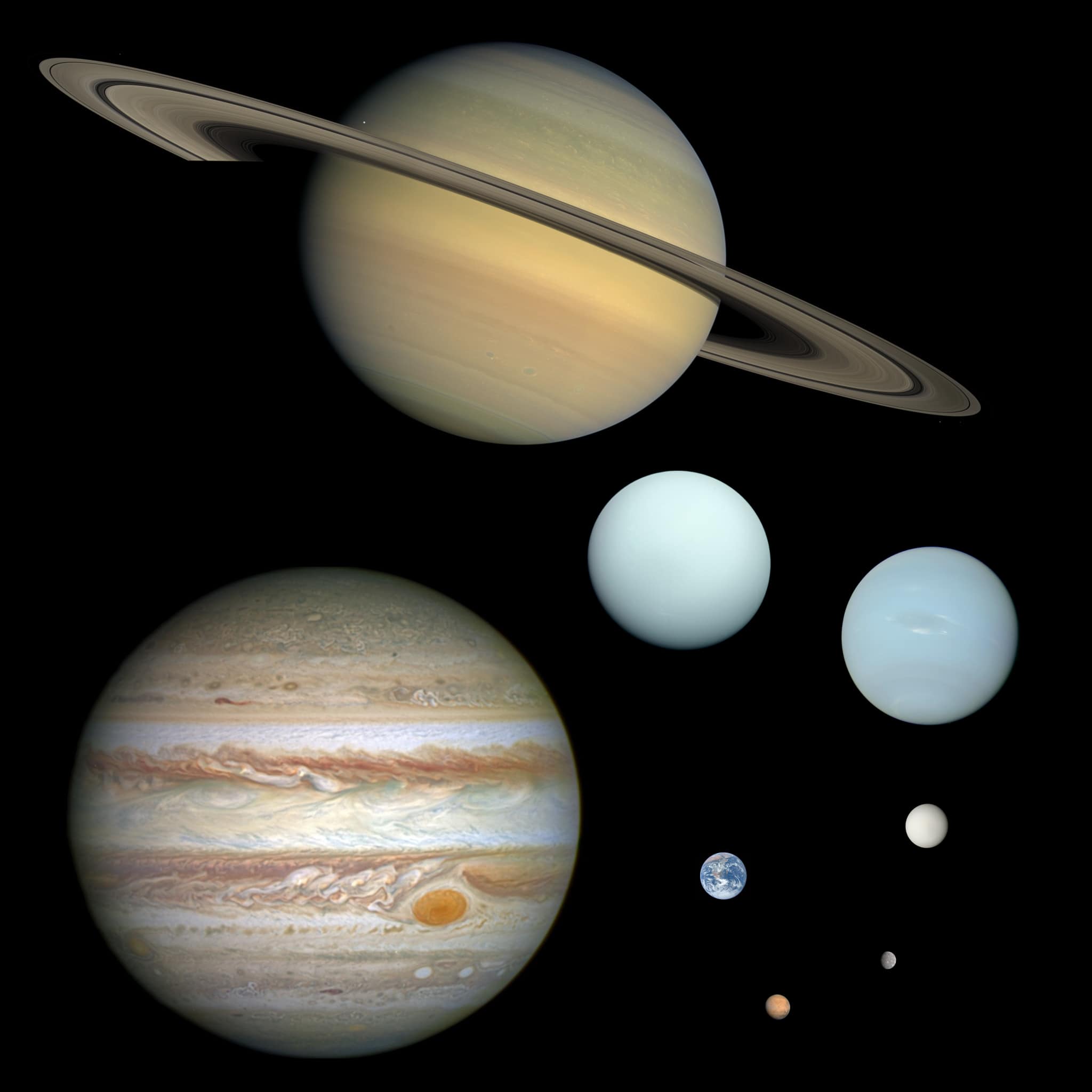Mercury is the closest planet to the sun while Io is one of Jupiter’s moons. Both have unique features in terms of composition and geological characteristics.
Despite their different sizes and positions in the solar system, both Mercury and Io offer intriguing insights into the diverse nature of celestial bodies. By exploring the contrasting attributes of these two entities, scientists can deepen their understanding of planetary formation and evolution.
We will delve into the distinct characteristics of Mercury and Io, shedding light on their significance in planetary science and our quest to unravel the mysteries of the cosmos. Join us on this cosmic journey as we compare and contrast these fascinating celestial bodies.
Mercury: The Smallest Planet
Mercury is known as the smallest planet in our solar system, but its size doesn’t diminish its significance. Let’s delve deeper into the characteristics and features of Mercury in comparison to Io.
Overview
- Mercury is the smallest planet in the solar system.
- It is the closest planet to the Sun, making it extremely hot.
Composition And Features
- Mercury is composed mostly of rocky material.
- It has a dense metallic core, making up a large portion of its structure.
Surface Conditions
- Mercury’s surface experiences extreme temperature variations.
- It has a very thin atmosphere, mostly made up of oxygen, sodium, hydrogen, and helium.

Credit: www.geological-digressions.com
Io: The Volcanic Moon
Introduction: Exploring Io, the Volcanic Moon of Jupiter, unveils a world of intense geological activity.
Volcanic Activity:
Io is renowned for its extravagant volcanic eruptions, making it one of the most volcanically active bodies in the solar system.
- The surface of Io is constantly reshaped by volcanic processes.
- Sulfur flows and plumes create a dynamic landscape on Io.
- Eruptions on Io can reach heights of over 250 miles.
Atmosphere:
The thin atmosphere of Io is composed primarily of sulfur dioxide and traces of other gases.
- Constant volcanic activity releases gases into Io’s atmosphere.
- Ionian atmosphere is influenced by interactions with Jupiter’s magnetic field.
Comparing Size And Distance
When it comes to understanding the characteristics of different celestial bodies, size and distance are two crucial factors. In this section, we will explore the size comparison and distance from the sun between Mercury and Io, two intriguing objects in our solar system.
Size Comparison
Size plays a significant role in determining the nature and features of a celestial body. Let’s take a look at the size comparison between Mercury and Io:
| Celestial Body | Diameter |
|---|---|
| Mercury | 4,879 kilometers |
| Io | 3,638 kilometers |
From the table, it is evident that Mercury is larger than Io, with a diameter of approximately 4,879 kilometers compared to Io’s diameter of 3,638 kilometers. Despite being smaller than Mercury, Io is still larger than Earth’s moon, making it a fascinating celestial object in its own right.
Distance From The Sun
The distance from the sun is another crucial factor that influences the characteristics and behavior of celestial bodies. Let’s explore the distances from the sun for both Mercury and Io:
- Mercury is the closest planet to the sun, with an average distance of approximately 57.9 million kilometers.
- On the other hand, Io, being one of Jupiter’s moons, is situated much farther away from the sun, with an average distance of approximately 421 million kilometers.
As we can observe, Mercury is significantly closer to the sun compared to Io due to its location as an inner planet. This proximity to the sun results in unique characteristics, such as its extreme temperatures and a faster orbital period compared to more distant celestial bodies like Io.
Geological Characteristics
Craters And Impact Features
Mercury and Io exhibit notable differences in their geological characteristics. Mercury is heavily cratered due to its lack of geological activity, while Io showcases a dynamic landscape marked by volcanic activity and impact features.
Tectonic Activity
Mercury’s surface is characterized by extensive tectonic activity, with large fault scarps and ridges across its terrain. In contrast, Io’s tectonic features are largely driven by volcanic processes such as lava flows and calderas.
Geological Significance
The geological significance of Mercury’s craters lies in providing insight into the planet’s history and impact events within the inner solar system. Io’s tectonic and volcanic features contribute to our understanding of planetary geology and volcanic processes.
Atmospheric Conditions
When comparing the atmospheric conditions of Mercury and Io, it becomes evident that despite being relatively small planets, they possess unique and intriguing characteristics. Let’s delve into the atmospheric aspects of these celestial bodies and explore the differences between Mercury’s thinning atmosphere and Io’s thin but active atmosphere.
Mercury’s Thinning Atmosphere
Mercury, the smallest planet in our solar system, boasts an atmosphere comprising primarily of oxygen, sodium, and hydrogen. Due to its proximity to the Sun, the planet’s atmosphere is constantly bombarded by solar winds, causing its thin exosphere to dissipate into space. The lack of a substantial atmosphere allows the surface temperature to vary drastically, ranging from scorching hot to freezing cold within a single day.
Io’s Thin But Active Atmosphere
Driven by volcanic activity, Io possesses a tenuous atmosphere consisting mainly of sulfur dioxide and traces of other compounds. The constant eruptions from its numerous volcanoes contribute to the replenishment of its atmosphere, giving Io a distinctive feature of an active albeit thin exosphere. This dynamic environment sets Io apart from other moons in the solar system, making it a fascinating subject of study for scientists and astronomers.

Credit: en.wikipedia.org
Potential For Life
Exploring the potential for life beyond our planet has always been a topic of great curiosity. While most of our attention has been focused on Mars, there are other celestial bodies in our solar system that deserve consideration. Two such candidates are Mercury and Io, both of which present intriguing possibilities for the existence of life.
Habitability Factors
When assessing the potential for life on a celestial body, several habitability factors come into play. These factors include the presence of water, the composition of the atmosphere, the availability of organic compounds, and the ability to sustain stable temperatures. Let’s examine how these factors vary between Mercury and Io.
Challenges For Life On Mercury
Mercury, the innermost planet of the solar system, poses significant challenges for life as we know it. Its proximity to the Sun results in extreme temperature variations. During the day, temperatures can surpass a scorching 800°F (430°C), while at night, temperatures plummet to a bone-chilling -290°F (-180°C). Additionally, the lack of a substantial atmosphere means that Mercury is exposed to solar radiation and frequent meteoroid impacts.
Furthermore, the absence of liquid water on Mercury’s surface is yet another obstacle. The planet’s surface is predominantly rocky and barren, with few signs of any water deposits. The extreme heat and harsh environmental conditions make it highly unlikely for any form of life to exist on Mercury.
Chances Of Life On Io
Io, one of Jupiter’s largest moons, offers a contrasting environment compared to Mercury. Despite being subject to intense volcanic activity, Io’s composition points towards the possibility of habitability. The moon’s surface is rich in sulfur compounds, which could serve as an energy source for potential organisms.
However, the challenges for life on Io are far from insignificant. Intense radiation from Jupiter’s magnetic field bombards the moon, making it a highly hostile environment. The constant volcanic eruptions release immense amounts of toxic gases into the atmosphere, further adding to the inhospitable conditions.
While the chances of life existing on Io are uncertain, scientists propose the existence of subsurface oceans, nourished by tidal forces exerted by Jupiter and its other moons. These hypothesized oceans may provide a more suitable habitat for life, shielded from the extreme surface conditions.
In conclusion, while both Mercury and Io present unique factors that contribute to their potential for life, Mercury’s extreme temperatures, lack of a substantial atmosphere, and absence of liquid water greatly diminish the possibility of life existing on the planet. On the other hand, Io’s volcanic activity and harsh surface conditions make it a challenging environment, although the existence of subsurface oceans gives rise to some hope. As we continue our exploration of the universe, it is crucial to broaden our focus and consider the potential for life on different celestial bodies.

Credit: www.reddit.com
Frequently Asked Questions On Mercury Vs Io
What Are The Main Differences Between Mercury And Io?
Mercury and Io are different in many ways. Mercury is the smallest planet in the solar system, while Io is one of Jupiter’s moons. Mercury has a very thin atmosphere, while Io has a thin atmosphere composed mainly of sulfur dioxide.
Additionally, Mercury has a heavily cratered surface, while Io has a surface dominated by volcanic activity.
How Do The Surface Conditions Of Mercury And Io Differ?
The surface conditions of Mercury and Io differ significantly. Mercury’s surface is covered in craters, while Io’s surface is characterized by extensive volcanic activity. Mercury experiences extreme temperature variations, with scorching hot days and freezing cold nights, whereas Io has a sulfur-dioxide-rich atmosphere and volcanic eruptions that contribute to its unique surface conditions.
What Makes The Geology Of Mercury And Io Distinct From Each Other?
Mercury and Io have distinct geological features. Mercury’s surface is heavily cratered, indicating a history of impacts, while Io’s surface displays volcanic calderas, mountains, and plains resulting from intense volcanic activity. These geological differences are attributed to the varying internal dynamics and thermal histories of Mercury and Io, leading to their unique geological landscapes.
How Do The Magnetic Fields Of Mercury And Io Differ?
While Mercury has a global magnetic field, Io does not possess a global magnetic field. Mercury’s magnetic field is a result of a dynamo effect from its liquid outer core, whereas Io’s lack of a global magnetic field is associated with its lack of a significant metallic core.
Both entities exhibit distinct magnetic field behaviors due to their differing internal compositions and geological processes.
Conclusion
Taking a closer look at Mercury and Io, we can see how their unique characteristics set them apart in our solar system. Mercury, with its scorching temperatures and lack of atmosphere, is a testament to the extreme conditions that exist beyond Earth.
On the other hand, Io, with its violent volcanic activity, showcases the dynamic and ever-changing nature of our universe. Both planets continue to intrigue scientists and offer valuable insights into planetary formation and evolution. Exploring these celestial bodies further will undoubtedly deepen our understanding of the vastness of our cosmos.



